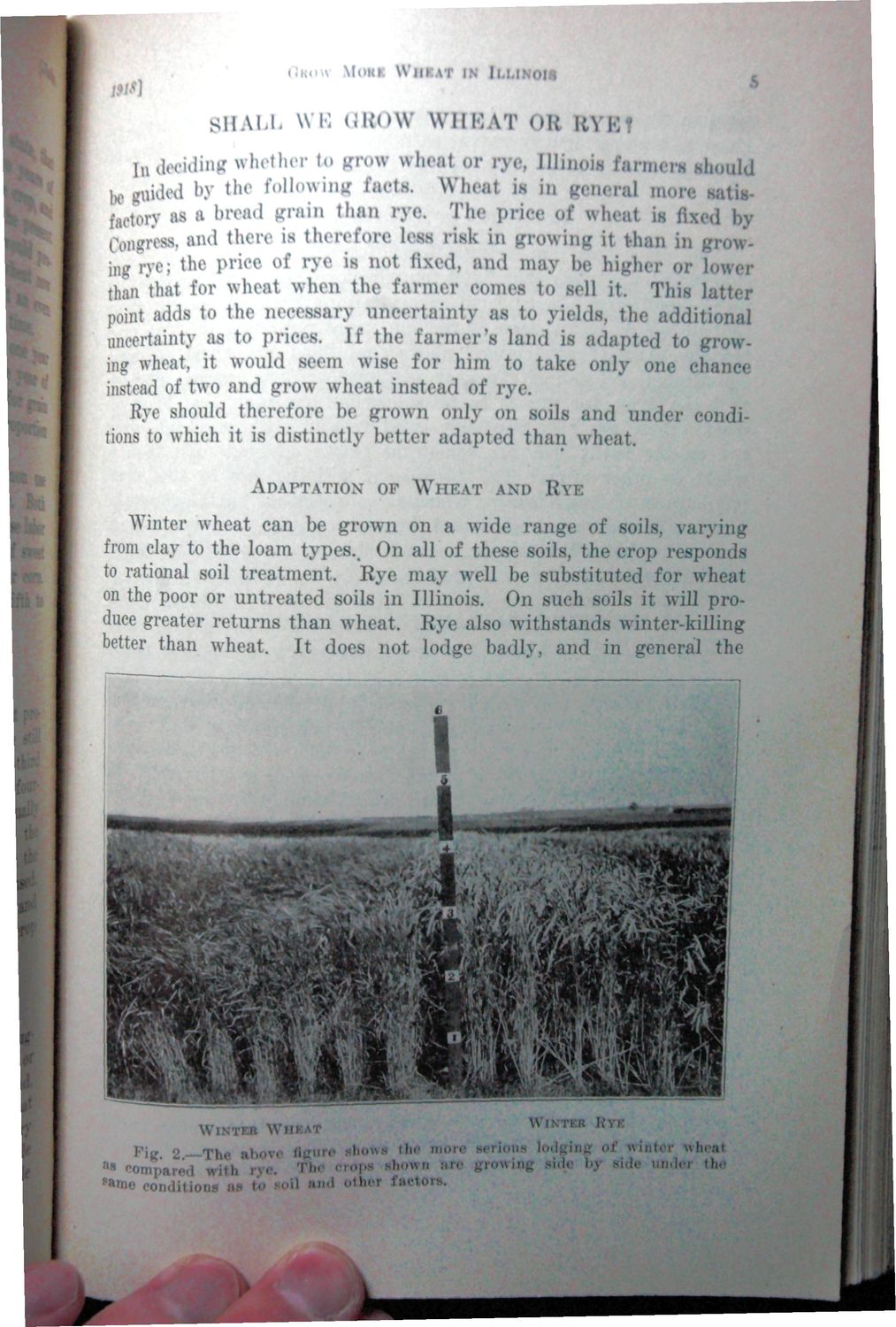| |
| |
Caption: War Publications - WWI Compilation 1923 - Article 30
This is a reduced-resolution page image for fast online browsing.

EXTRACTED TEXT FROM PAGE:
i [\w MOKK W H E A T IN I INOM 19U<] .s ItYKf SHALL WE GROW WIIBAT oil In deciding whether to gro* wheat or rye, Illinois farmer* should be guided by the following faeti, Wheat is in general mom satisfactory as a bread grain than n o . The price of wheat is fix I by Congress, and there is tlien fore less riak in growing it than in gron ingne; the price of rye is not fixed, and may he higher or lower than that for wheat when the farmer comes to sell it. This latter point adds to the necessary uncertainty as to yields, the additional uncertainty as to prices. If the farmer's land is adapted to growiiig wheat, it would seem wise for him to take only one chance instead of two and grow wheat instead of rye. Rye should therefore be grown only on soils and under conditions to which it is distinctly better adapted than wheat. ADAPTATION OF WHEAT AND RYE Winter wheat can be grown on a wide range of soils, varying from clay to the loam types.. On all of these soils, the crop responds to rational soil treatment. Rye may well be substituted for wheat on the poor or untreated soils in Illinois. On such soils it will produce greater returns than wheat. Rye also withstands winter-killing better than wheat. It does not lodge badly, and in general the W Tia W I I F i g . 2 . — T h e al> as COT: ared * i« '*me com <»tf' ,1 ' '; ", , , , ' » howa s,,mvn 'h e r 0, rit "" HI nTe ng I- :'\nj ol w i n t e r wheat l< i • i.lc iin.l. i -1 J M ^ V
| |